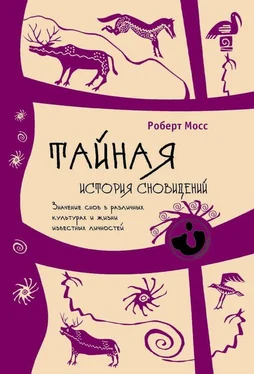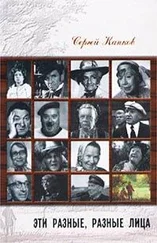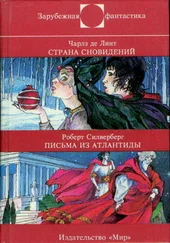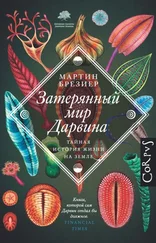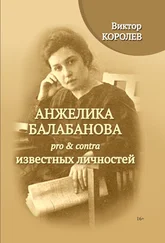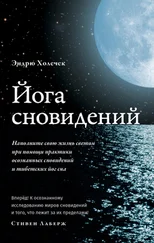[15] Michel Chauveau, Egypt in the Age of Cleopatra , trans. David Lorton (Ithaca, NY: Cornell University Press, 2000), pp. 123–126.
[16] John Ray, Reflections of Osiris: Lives from Ancient Egypt (Oxford: Oxford University Press, 2002), pp. 148–152.
[17] Joan Grant, Far Memory (Columbus, OH: Ariel Press, 1988).
[18] George Seferis, Collected Poems , trans. Edmund Keeley and Philip Sherrard (London: Anvil Press Poetry, 1982).
[19] Joan Grant, Winged Pharaoh (Columbus, OH: Ariel Press, 1986).
[20] Robert Moss, Dreamways of the Iroquois: Honoring the Secret Wishes of the Soul (Rochester, VT: Destiny Books, 2005), and “Missionaries and Magicians”, in Wonders of the Invisible World: 1600–1900 , ed. Peter Benes (Boston: Boston University Press, 1995).
[21] Reuben Gold Thwaites, ed., Jesuit Relations and Allied Documents: Travels and Explorations of the Jesuit Missionaries in New France, 1610–1791 (Cleveland, OH: Burrows Brothers, 1896–1901), 23:121–123.
[22] Ibid., 33:191.
[23] Harriet Maxwell Converse, Myths and Legends of the New York State Iroquois (Albany, NY: New York State Museum, 1908), p. 94.
[24] Thwaites, Jesuit Relations and Allied Documents , 33:195.
[25] Этот отрывок отражает взаимосвязь, во-первых, между маньчжурским вариантом (см. Margaret Novak and Stephen W. Durrant, The Tale of the Nishan Shamaness: A Manchu Folk Epic (Seattle: University of Washington Press, 1977)) и, во-вторых, устными традициями, особенно дагуро-монгольским вариантом (см. Caroline Humphrey and Urgunge Onon, Shamans and Elders: Experience, Knowledge, and Power among the Daur Mongols (Oxford: Clarendon Press, 1996)).
[26] M. A. Czaplica, Aboriginal Siberia, a Study in Social Anthropology (Oxford: Clarendon Press, 1914), p. 243.
[27] Barbara Tedlock, The Woman in the Shaman’s Body (New York: Bantam, 2005).
[28] Stephen W. Durrant, “The Nišan Shaman Caught in Cultural Contradiction”, Signs 5 , no. 2 (Winter 1979): 338–347.
[29] Тацит, «Анналы».
[30] Там же.
[31] Изображение Элен в исполнении Чески Поттер см.: John Matthews, The Celtic Shaman’s Pack (Shaftesbury, England: Element, 1995).
[32] The Mabinogion , trans. Jeffrey Gantz (London: Penguin Books, 1976), pp. 118–127.
[33] Caitlín Matthews, King Arthur and the Goddess of the Land: The Divine Feminine in the Mabinogion (Rochester, VT: Inner Traditions, 2002), pp. 57–82.
Глава 2. Толкователи и провидцы
[1] Плутарх «Цезарь».
[2] Цицерон «О дивинации».
[3] Аристотель «О толковании сновидений».
[4] Артемидор «Онейрокритика».
[5] Самые древние «вопрошающие» ( ensi на шумерском языке, sha’ilu на аккадском языке) являлись богинями, которые воплощались в теле жриц. Гильгамеш рассказывает свои сны матери, богине Нин-Сун, Повелительнице дикой Буйволицы, «той, что знает все». Думузи рассказывает свой ужасный сон сестре Гештинанне, богине сновидений и вина (см. главу 5).
[6] «Женщина высотой с небо» – это Инанна в сновидении Саргона. См. Jerrold S. Cooper and Wolfgang Heimpel “The Sumerian Sargon Legend”, Journal of the American Oriental Society 103 (1983): 67–82.
[7] Scott B. Noegel, “Dreams and Dream Interpreters in Mesopotamia and in the Hebrew Bible”, in Dreams , ed. Kelly Bulkeley (New York: Palgrave Macmillan, 2001), pp. 45–72.
[8] Lionel Casson, Libraries in the Ancient World (New Haven, CT: Yale University Press, 2001), pp. 11–12.
[9] O. R. Gurney, “Babylonians and Hittites”, in Oracles and Divination , ed. Michael Loewe and Carmen Blacker (Boulder: Shambhala, 1981), p. 158.
[10] The New Jerusalem Bible (New York: Doubleday, 1990), p. 67, note e.
[11] Kasia Maria Szpakowska, “The Perception of Dreams and Nightmares in Ancient Egypt: Old Kingdom to Third Intermediate Period” (PhD diss., University of California, Los Angeles, 2000), p. 273.
[12] A. Leo Oppenheim, The Interpretation of Dreams in the Ancient Near East (Philadelphia: American Philosophical Society, 1956), pp. 302–303.
[13] John L. Strong, The Legend of King Asoka (Princeton, NJ: Princeton University Press, 1989), pp. 274–275.
[14] Antonella Crescenzi and Fabrizio Torricelli, “A Tun-huang Text on Dreams: MsPelliot Tibetan 55-IX”, Tibet Journal 20 , no. 2 (Summer 1995): 3–17.
[15] Артемидор «Онейрокритика».
[16] Софокл «Эдип-царь».
[17] Артемидор «Онейрокритика».
[18] Там же.
[19] Там же.
[20] Там же.
[21] Плутарх «Цезарь».
[22] George Devereux, Dreams in Greek Tragedy: An Ethno-Psycho-Analytical Study (Berkeley: University of California Press, 1976), pp. xxii, xxvi.
[23] G. W. Bowerstock, Fiction as History: Nero to Julian (Berkeley: University of California Press, 1997), p. 84.
[24] Артемидор «Онейрокритика».
[25] Там же.
[26] Там же.
[27] Там же.
[28] Там же.
[29] Там же.
[30] S. R. F. Price, “The Future of Dreams: From Freud to Artemidorus”, Past and Present , no. 113 (November 1986): 29.
[31] Артемидор «Онейрокритика».
[32] Там же.
[33] Там же.
[34] Там же.
[35] Cristine Walde, “Dream Interpretation in a Prosperous Age? Artemidorus, the Greek Interpreter of Dreams” in Dream Cultures: Explorations in the Comparative History of Dreaming , ed. David Shulman and Guy G. Stroumsa (Ne York: Oxford University Press, 1999), pp. 126, 128.
[36] Плутарх «Александр».
[37] Там же.
[38] Арриан «Поход Александра».
[39] Там же.
[40] Плутарх «Александр».
[41] Там же.
[42] Там же.
[43] Арриан «Поход Александра».
[44] Richard Wilheim and Cary F. Baynes, trans., The I Ching, or Book of Changes (Princeton, NJ: Princeton University Press, 1990), p. 294.
[45] И-Цзин – Книга Перемен.
[46] Там же.
[47] Там же.
[48] Suma Ch’ien’s Historical Records , trans. Herbert J. Allen (London: Journal of the Royal Asiatic Society, 1895), chap. 3.
[49] Shu Jing , trans. James Legge (Hong Kong: Hong Kong University Press, 1960), 3:281–283.
[50] Jonathan D. Spence, Emperor of China: Self-Portrait of K’ang-hsi (New York: Vintage Books, 1975), pp. 47–48.
[51] Ibid., p. 45.
[52] Ibid., p. 29.
[53] Ibid., p. 58.
[54] Ibid.
[55] Ibid., p. 59.
[56] Wilhelm and Baynes, The I Ching, or Book of Changes , p. 294.
[57] Kristofer Schipper, The Taoist Body (Berkeley: University of California Press, 1993), p. 37.
[58] G. Willoughby-Meade, Chinese Ghosts and Goblins (London: Constable, 1928).
[59] Beverley Zabriskie, “Synchronicity and the I Ching : Jung, Pauli, and the Chinese Woman”, Journal of Analytical Psychology 50 (2005): 224.
Читать дальше
Конец ознакомительного отрывка
Купить книгу
